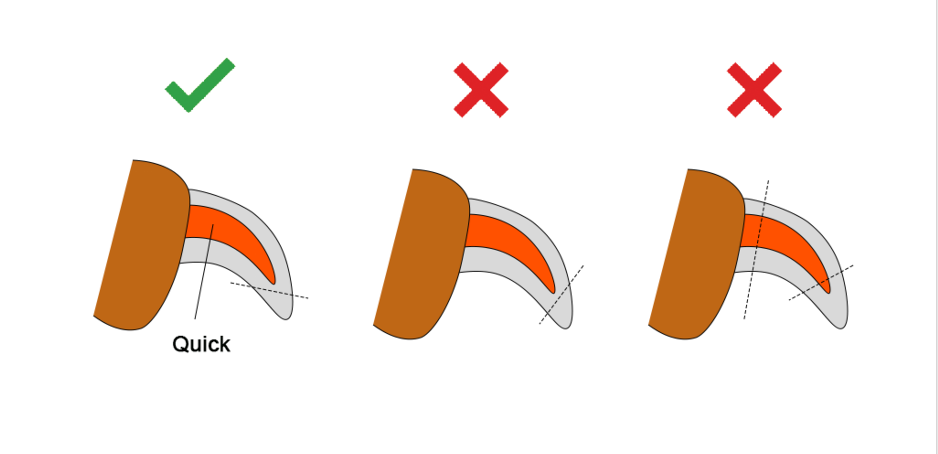Nail care is an important part of looking after your pet. Some pets need their nails trimmed regularly, while others may never require it. In nature, nails usually wear down through contact with rough surfaces, but many of our pets live in environments where this doesn’t happen naturally. Regular nail checks and care help prevent discomfort and injury.
Long nails aren’t just painful, they can also lead to foot issues such as arthritis and joint problems. In severe cases, nails may curl and grow back into the paw, causing extreme discomfort and pain. They can also snag on fabric, toys, or cage bars, which can easily result in injury as the pet struggles to free themselves. This is a particularly common problem in small animals such as rodents, marsupials, and birds, whose delicate feet are more prone to getting caught.
In this article, we’ll discuss the signs that your pet’s nails may be too long and share tips on how to safely keep them trimmed.
A few signs your pet’s nails might be too long are:
- Getting stuck in fabric.
- Hearing the ticking of the nails of your pet when they walk, often seen with dogs.
- Nails that grow in a circle.
Types of nail grinders and clippers
Nail grinder
The first type is the nail grinder, often also called a Dremel. Nail grinders file your dog’s nails smooth, and because you file instead of clip, it’s easier to avoid hitting the quick. They’re especially useful for dogs with thick or dark nails where the quick is hard to see, and many pets find the gradual approach less stressful than the sound or pressure of clippers.
Guillotine clipper
Guillotine clippers have a small hole where you insert your pet’s nail, and a blade slides up to trim it. They can be a bit tricky to manoeuvre, especially with wiggly pets, but they’re effective for small to medium-sized dogs and cats when used carefully.

Scissor style clipper
Scissor-style clippers look like small scissors with rounded divots at the ends of each blade. This type of clipper is ideal for small animals such as cats, rabbits, or guinea pigs, as it allows for precise control when trimming delicate nails.

Plier style clipper
Pliers-style clippers are similar to scissor-style ones but include a spring between the handles. This added strength makes them ideal for larger pets or those with thick, tough nails, allowing for a clean, even cut with less effort.

Clipping
Pet nails consist of a pink-coloured vein called the quick on the inside and a harder shell on the outside. Blood flows through the quick. When nails are left to grow too long for extended periods, the quick lengthens, making it harder to trim the nails back to a healthy length later on. Regular nail care prevents this and helps your pet stay comfortable. You can either clip or file your pet’s nails.
When clipping the nails, avoid cutting into the quick, as this is painful and will cause bleeding. If you’re worried about hitting the quick, trim small bits of the nail several times instead of taking one big cut. If you do clip into the quick, cornstarch, flour, or styptic powder will help stop the bleeding. If your pet’s quick has grown longer due to overgrown nails, trim the nails regularly and gradually to help the quick recede back to a normal length.
When clipping, make the cut more horizontal than vertical so the nail hits the floor flat, not with a point, when your pet walks.

Get your pet used to having their feet handled and nails touched through positive, force-free training, ideally before you actually need to trim them. Always praise and reassure your pet while clipping their nails. If your pet becomes anxious or unsure, stop and try again another day. If you’re not comfortable trimming nails yourself, most vets and groomers can do it safely for you.
Dark-colored nails
Some pets have dark-coloured nails where the quick is difficult to see. You can try locating it by shining a flashlight through the nail, which works especially well for rabbits. If you still can’t spot the quick, trim small sections of the nail gradually rather than making one large cut. Before clipping, gently press the clippers on the spot you plan to cut, if your pet reacts or pulls away, you’ve likely reached the quick.
Pet nail care
Nail care is an important part of your pet’s routine. Long nails aren’t just uncomfortable, over time, they can lead to health issues such as pain, posture problems, or joint strain. Keeping your pet’s nails at a healthy length helps them stay comfortable and mobile. With a bit of practice and positive reinforcement, most pet owners can learn to trim their pet’s nails confidently without needing a vet or groomer.
Would you like to know more about our pet sitting, dog walking, dog training or pet relocation services? Feel free to contact us.

